Tobacco Substitute Products: An In-Depth Exploration into Manufacturing, Applications, and Opportunities
As global attitudes toward smoking evolve, so too does the demand for cleaner, safer alternatives to traditional tobacco. From nicotine pouches to herbal blends and synthetic formulations, tobacco substitute products are rapidly reshaping the landscape of nicotine consumption. For B2B buyers, private-label brands, and manufacturers, understanding the science, manufacturing techniques, and commercial opportunities behind these alternatives is essential.
This industry briefing provides a comprehensive look at the current state of tobacco substitute products—covering definitions, production methods, product types, market segmentation, and actionable insights to help businesses tap into this fast-growing sector.
Understanding Tobacco Substitutes: Key Terms and Definitions
Before exploring how these products are made and marketed, it’s important to clarify what they are:
-
Tobacco Substitutes: Products intended to replicate the experience of smoking or nicotine delivery without using the tobacco plant itself. These may contain nicotine from alternative sources or be completely nicotine-free.
-
Nicotine-Free Alternatives: Smoke-like products, such as herbal cigarettes or vaporized botanicals, designed for consumers seeking the ritual of smoking without any nicotine content.
-
Synthetic Nicotine: Nicotine created in a laboratory setting—chemically identical to natural nicotine but not derived from tobacco. It offers greater purity and regulatory advantages.
-
Nicotine Pouches: Oral-use, smokeless sachets that deliver nicotine without combustion. Typically composed of plant-based fibers, flavoring agents, and either synthetic or extracted nicotine.
These definitions provide a foundation for evaluating manufacturing approaches and commercial potential across different product categories.
Manufacturing Tobacco Substitute Products: Methods and Innovations
Manufacturing processes for tobacco substitutes vary widely depending on the product type, nicotine source, and delivery mechanism. Below is a breakdown of key methods used in the industry:
1. Nicotine Extraction and Synthesis
For traditional nicotine products, nicotine is typically extracted from tobacco leaves through chemical processes that isolate the compound. More recently, synthetic nicotine has gained traction, especially in regulated markets, because it offers consistent purity and is not classified as a tobacco product in some jurisdictions.
Production steps include:
-
Extraction or synthesis of nicotine
-
Purification to remove impurities
-
Standardization for consistent potency and performance
2. Herbal Smoking Alternatives
These products use dried herbs like chamomile, peppermint, or green tea to simulate the sensory experience of smoking. They are often favored by consumers seeking to quit tobacco entirely.
Key steps include:
-
Drying and grinding of plant materials
-
Steam distillation or infusion for flavoring
-
Shaping into cigarette-like or loose-leaf forms
3. Nicotine Pouches and Oral Alternatives
Nicotine pouches are among the most popular substitutes today, delivering controlled nicotine doses without smoke, vapor, or odor. They are made by combining nicotine (natural or synthetic) with plant-derived fibers, moisture regulators, and flavoring agents.
Process highlights:
-
Mixing and binding of dry and wet ingredients
-
Flavor infusion and portion sizing
-
Hygienic packaging into individual pouches
4. E-Liquids for Vapor Products
E-liquids are crafted by dissolving nicotine in a carrier base (typically propylene glycol and vegetable glycerin), then adding flavors. Quality control is vital to ensure consistent nicotine distribution and user safety.
Production priorities:
-
Accurate nicotine dosing
-
Homogeneous blending
-
Microbial and chemical testing
Comparing Formulas and Manufacturing Approaches
Each tobacco substitute format offers distinct advantages—and limitations—that influence product development and market positioning.
| Product Type | Key Benefits | Considerations |
|---|---|---|
| Synthetic Nicotine | Pure, tobacco-free, regulatory flexibility | Higher cost of synthesis and formulation |
| Herbal Cigarettes | No nicotine, appealing for non-smokers | Limited appeal to nicotine-dependent consumers |
| Nicotine Pouches | Discreet, smoke-free, user-friendly | Complex flavor and shelf-life requirements |
| E-liquids | Highly customizable, scalable production | Regulatory scrutiny and evolving public perception |
Understanding these differences is critical for brands deciding which product lines to invest in or expand.
Market Applications and Target Consumer Segments
Tobacco substitutes serve diverse consumer needs across global markets. Here are the primary groups and how different product types align with their preferences:
Health-Conscious Consumers
Often the earliest adopters of tobacco-free or synthetic nicotine products, these individuals are drawn to options with reduced health risks—especially pouches and nicotine-free herbal blends.
Smokers Seeking Cessation
Those attempting to quit smoking may prefer gradual transition tools like nicotine pouches or herbal cigarettes that maintain behavioral rituals without harmful combustion.
Younger Adult Demographics
Flavored pouches and customizable vape solutions appeal to younger consumers who are either new to nicotine or moving away from combustible tobacco.
B2B Clients and Industry Players
Bulk buyers such as nicotine patch manufacturers, vape brands, and white-label retailers require scalable, compliant solutions with proven quality controls—often partnering with platforms like Snuff Factory to streamline sourcing and OEM services.
FAQs: What Industry Stakeholders Want to Know
Why are tobacco substitutes gaining market share?
Increased health awareness and global restrictions on combustible tobacco are pushing both consumers and brands toward cleaner alternatives.
Are these alternatives really safer?
While not risk-free, most substitutes—particularly non-combustible forms like pouches and synthetic nicotine—reduce exposure to harmful chemicals found in traditional cigarettes.
How do I evaluate a good manufacturing partner?
Prioritize partners who offer clear ingredient sourcing, third-party lab results, and GMP-compliant production standards. Trusted directories like Snuff Factory are excellent starting points.
What are the startup costs for producing tobacco substitutes?
Costs vary by formulation. For example, herbal smoking products may require less capital investment than synthetic nicotine due to the complexity of synthesis and regulatory documentation.
Can a brand offer both nicotine and nicotine-free products?
Absolutely. Many companies successfully cater to multiple consumer types by diversifying their product portfolios across different strength levels and formats.
Conclusion: Shaping the Future of the Smoke-Free Industry
Tobacco substitute products are no longer niche—they’re the future of responsible nicotine delivery and consumer wellness. As new materials, formulations, and extraction technologies emerge, so do opportunities for brands to innovate and scale responsibly.
For businesses seeking a foothold in this space, working with experienced manufacturers—like those vetted by Snuff Factory—is key to navigating regulatory landscapes and delivering products that meet evolving consumer standards.
Now is the time to reimagine your product offerings. Explore the full range of tobacco-free innovations and lead the charge toward a healthier, more sustainable future.


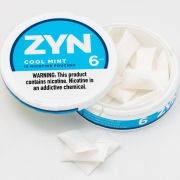
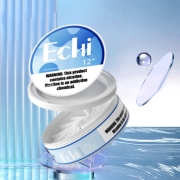
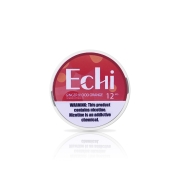
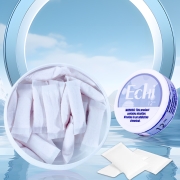

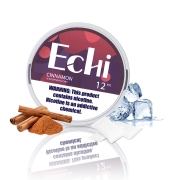


Leave a Reply
Want to join the discussion?Feel free to contribute!